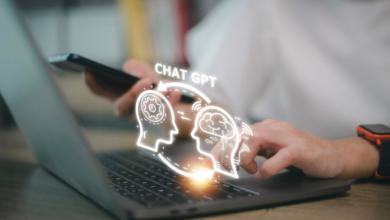Developing ChatGPT Plugins for Popular Messaging Apps

In the realm of conversational AI and messaging platforms, the integration of ChatGPT plugins into popular messaging apps represents an exciting frontier. ChatGPT, a sophisticated language model developed by OpenAI, has empowered developers to create innovative plugins that enhance user experiences within messaging environments. These plugins use ChatGPT’s natural language processing to provide users with various functionalities, including answering queries and offering personalized recommendations, all integrated seamlessly into familiar messaging interfaces.
Defining ChatGPT Plugins for Messaging Apps
ChatGPT plugins are specialized modules or extensions designed to augment the capabilities of messaging apps by incorporating advanced AI-driven conversational features. These plugins leverage ChatGPT’s underlying technology to understand and generate human-like text responses based on user inputs received within the messaging app.
The key components of ChatGPT plugins include:
Natural Language Understanding (NLU): ChatGPT plugins excel in comprehending the nuances of human language, enabling them to interpret user queries accurately. This NLU capability allows plugins to extract intent, entities, and context from messages, facilitating more meaningful interactions.
1. Conversational Generation:
Once a message is understood, ChatGPT plugins can generate contextually relevant and coherent responses. This conversational aspect is vital for providing users with engaging and helpful interactions.
2. Integration with Messaging Apps:
Plugins are seamlessly integrated into popular messaging platforms such as Slack, Microsoft Teams, Discord, or even social media apps like Facebook Messenger or WhatsApp. This integration allows users to interact with ChatGPT-powered functionalities directly within their preferred messaging environment.
Types of plugins for messaging apps
1. Chatbots:
Chatbots are perhaps the most prevalent type of plugin for messaging apps. They utilize natural language processing (NLP) and artificial intelligence (AI) to engage in text-based conversations with users. Chatbots can assist with customer support, answer FAQs, provide information, and even perform transactions, all within the messaging interface.
2. Notification Plugins:
Notification plugins allow users to receive alerts and updates directly within their messaging app. These plugins integrate with external services, such as news providers, weather services, or task management tools, to send timely notifications and reminders to users.
3. Productivity Tools:
Plugins designed for productivity enhance collaboration and task management within messaging apps. Examples include plugins for creating polls, scheduling meetings, managing to-do lists, and sharing files seamlessly with team members.
4. Integration Plugins:
Integration plugins connect messaging apps with other software tools and platforms, enabling streamlined workflows. For instance, integration with project management tools like Trello or Asana allows users to receive updates and notifications directly in their messaging app.
5. Interactive Content Plugins:
These plugins introduce interactive elements into messaging conversations, such as quizzes, games, or interactive forms. They make interactions more engaging and enjoyable for users, providing a break from routine conversations.
6. Translation Plugins:
Translation plugins facilitate multilingual conversations by automatically translating messages into the recipient’s preferred language. This type of plugin is especially useful for global teams or communities where language barriers may exist.
7. E-commerce Plugins:
E-commerce plugins enable users to browse products, make purchases, and track orders—all without leaving the messaging app. Businesses can leverage these plugins to drive sales and provide convenient shopping experiences.
8. Analytics and Reporting Plugins:
Analytics plugins gather data from messaging interactions and generate reports or dashboards within the app. They provide insights into user engagement, sentiment analysis, and other valuable metrics for businesses.
9. Security Plugins:
Security-focused plugins enhance the privacy and security of messaging conversations. They may include features like end-to-end encryption, message expiry, or identity verification to protect user data.
10. Social Media Plugins:
Social media plugins enable users to interact with their social media accounts directly from the messaging app. Users can post updates, share content, and engage with their networks without switching between multiple apps.
Steps in Developing ChatGPT Plugins
1. Define Use Cases:
- Identify specific scenarios or use cases where ChatGPT can add value within a messaging context. Examples include automating customer support, providing personalized recommendations, assisting with task management, language translation, or enhancing team collaboration.
2. Data Collection and Training:
- Gather and curate datasets relevant to the identified use cases. The quality and relevance of training data significantly impact the plugin’s performance.
- Fine-tune the ChatGPT model using supervised learning techniques on this data to optimize it for specific tasks and contexts.
- Ensure that the training data covers a diverse range of scenarios and user intents to enhance the model’s robustness.
3. Plugin Architecture Design:
- Design the architecture of the plugin to integrate ChatGPT into the messaging app environment.
- Implement components for handling incoming messages, processing them using ChatGPT for natural language understanding (NLU), and generating appropriate responses.
- Include features like context tracking to maintain coherence in conversations over multiple messages or interactions.
- Implement session management to handle user states and maintain conversation context.
4. Integration with Messaging APIs:
- Integrate the ChatGPT-powered plugin with the messaging APIs provided by the target platform (e.g., Slack, Microsoft Teams, Discord, Facebook Messenger).
- Ensure seamless communication between the plugin and the messaging environment to send and receive messages in real time.
- Handle authentication and authorization mechanisms required by the messaging platform to access user messages and respond accordingly.
5. Testing and Iteration:
- Thoroughly test the ChatGPT plugin across different scenarios and user interactions to validate its performance and user experience.
- Conduct functional testing to ensure that the plugin accurately understands user intents and generates contextually relevant responses.
- Test the plugin’s scalability and performance under varying loads to ensure responsiveness and stability.
- Collect input from both users and stakeholders, analyze it to pinpoint areas that require improvement, and then continuously refine the design based on this feedback.
- Use metrics such as accuracy, response time, and user satisfaction to measure the plugin’s effectiveness and make iterative improvements.
Additional Considerations:
1. Data Privacy and Security:
Ensure that the plugin complies with data privacy regulations and best practices, especially when handling sensitive user information within messaging apps.
2. User Experience (UX) Design:
Pay attention to the user interface and overall user experience of the plugin within the messaging app. Design intuitive interactions that align with the platform’s UI/UX guidelines.
3. Continuous Monitoring and Maintenance:
After deployment, monitor the performance of the ChatGPT plugin in production. Implement mechanisms for logging and tracking errors to quickly address issues and improve the plugin over time.
In conclusion, the integration of ChatGPT plugins into popular messaging apps represents a significant advancement in the field of conversational AI. These plugins leverage ChatGPT’s natural language processing capabilities to enhance user experiences by offering a wide range of functionalities seamlessly integrated into familiar messaging interfaces. From chatbots providing customer support to notification plugins delivering timely updates and from productivity tools streamlining collaboration to translation plugins breaking language barriers, the possibilities are vast.
Developing ChatGPT plugins for messaging apps involves several key steps, including defining use cases, collecting and training data, designing plugin architecture, integrating with messaging APIs, and thorough testing and iteration. Additionally, considerations such as data privacy, user experience design, and continuous monitoring are essential for ensuring the effectiveness and reliability of these plugins in real-world environments.
As the demand for AI-driven conversational experiences continues to grow, ChatGPT plugins offer businesses and developers powerful tools to create innovative solutions that streamline workflows, enhance communication, and provide personalized interactions within messaging platforms. With ongoing advancements in AI technology and continued refinement of plugin development processes, the future holds even more exciting possibilities for ChatGPT-powered experiences in messaging apps.
Visit www.intogeeks.com for more insights about plugins.




